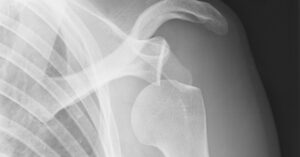 Shoulder instability is a relatively common concern in athletes, especially among those who play contact sports such as football, basketball and rugby. This condition has a number of treatment options, including physical therapy and various surgical procedures, but much remains unclear about how to determine the best course for each patient.
Shoulder instability is a relatively common concern in athletes, especially among those who play contact sports such as football, basketball and rugby. This condition has a number of treatment options, including physical therapy and various surgical procedures, but much remains unclear about how to determine the best course for each patient.
One initiative that aims to address these questions is the Multicenter Orthopaedic Outcomes Network (MOON) Shoulder Group. The group’s shoulder instability study is co-led by Carolyn M. Hettrich, MD, MPH, chief of the shoulder service in the Department of Orthopaedic Surgery at Brigham and Women’s Hospital.
“This study is aimed at looking at predictors of outcomes for patients who undergo surgery for shoulder instability,” Dr. Hettrich said. “It is through understanding what leads to both excellent and poor outcomes that we can improve patient care.”
So far, more than 1,800 patients have been enrolled in the study, and 16 papers using data from the project already have been published. The investigators will continue to follow study participants for up to a decade after their surgeries to determine long-term outcomes, including the predictors of arthritis.
MOON Shoulder Group Studies
The MOON Shoulder Group is the largest prospective cohort of patients with shoulder problems in the world. Dr. Hettrich launched the group’s shoulder instability study with Brian Wolf, MD, in 2012, when she was at the University of Iowa. The study now includes 26 surgeons from across the country. In addition to studying shoulder instability, the larger group also has studies looking at rotator cuff tears and shoulder arthroplasty.
“These efforts have already produced important findings,” Dr. Hettrich said. “We have published research looking at differences in age, gender and race among patients. We’ve also looked at return-to-play in athletes.”
As part of the study, data are being collected on all patients at the time of surgery and at several points of follow-up: six months, two years, six years and 10 years. All surgeries for shoulder instability, both open and arthroscopic, are included in the study.
“Based on what we’ve already learned, we know that we should consider surgery for shoulder instability much earlier in certain groups of patients,” Dr. Hettrich said. “This is in part because subsequent dislocations can predispose people toward having more loss of cartilage and bone, which can increase the risk of repeat dislocation and poor outcomes.”
Using Data to Optimize Patient Outcomes
One recent study from Dr. Hettrich, presented at the virtual meeting of the American Shoulder and Elbow Surgeons in October, looked at the predictors of bone loss at the time of surgery. The prospective, multicenter study, which included 895 patients, found that an increased number of preoperative shoulder dislocations was the strongest modifiable predictor of glenoid and humeral bone loss, which is known to result in worse outcomes. It was one of only eight studies selected for presentation at the meeting. A poster featuring details of this same study was also awarded as the top poster in the category of Shoulder and Elbow by the American Orthopaedic Association and will be featured at this year’s Annual Leadership Meetings.
Dr. Hettrich said her group plans to submit the study for publication. They will also be publishing an online calculator for predictors of bone loss that orthopaedic surgeons and their patients can use when making treatment decisions.
“The Brigham is one of the lead sites for the shoulder instability study,” Dr. Hettrich concluded. “We’re on the forefront of looking at what allows patients to do well and what may cause them to do poorly, and then applying this information to the care of our patients so that we can optimize their outcomes.”